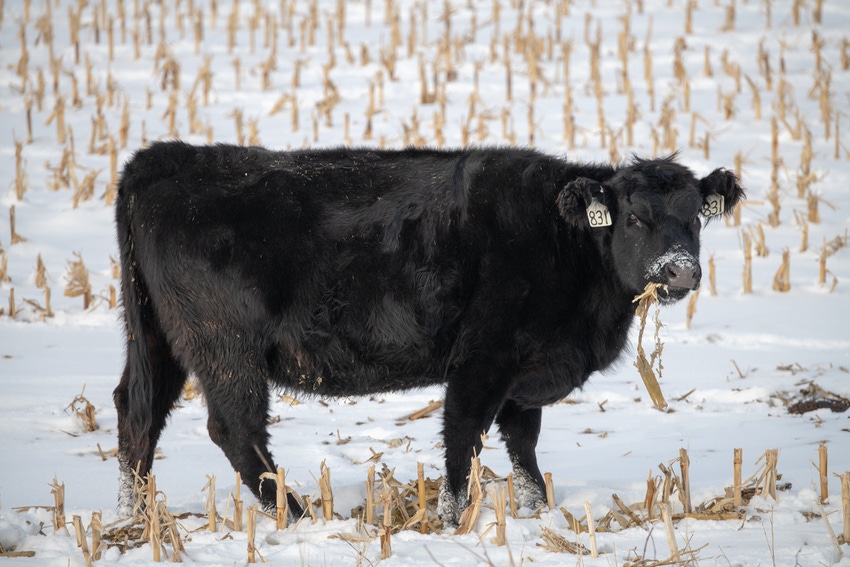Understanding cattle health concerns on cornstalks
Awareness, planning important when grazing cornstalks.
October 12, 2023

By Lindsay Waechter-Mead, DVM, University of Nebraska Extension
Grazing corn residue is common practice in the Midwest and a quality resource for cattle producers to utilize. While the forages available can provide the necessary nutritional requirements, there are a few health conditions that need to be planned for prior to turn out.
Acidosis
Acidosis, or grain overload, occurs when cattle consume large amounts of feed that contains high quantities of fermentable carbohydrates, leading to clinical signs in the animal. When grazing corn residue, the feedstuff would be too much dropped corn. Rumen microbes rapidly begin to ferment the carbohydrates in the corn, which leads to an increase in lactate formation. When lactate production increases, the rumen pH drops below the normal range of 5.6-6.9 and begins to damage the rumen epithelium. This leads to an increase in acid-loving bacteria and yeast in the damaged rumen. All of these affect the blood volume and hydration status of tissues throughout the body, leading to acute clinical signs of diarrhea, dehydration, depression, and anorexia.
Treatment for acidosis involves restoring the rumen microbes, correcting dehydration and acidic rumen microenvironment, and managing secondary complications. Long term consequences of acidosis may include abortions and laminitis.
Management is key to preventing acidosis and is more rewarding than treatment. Knowing how much corn is in the field will help establish a grazing plan. The risk of acidosis increases if fields contain more than 8 bushels of corn per acre. Bushels can be estimated by counting dropped ears of corn in three different 100 feet rows and dividing this number by 2. If too much dropped corn is a concern, rumen microbes can begin acclimating to increased carbohydrate diets by slowly increasing amount of corn fed over a 10-day period prior to grazing. More management strategies can be found at Grazing Corn Stalks – Management Strategies | UNL Beef.
Nitrate toxicity
Nitrates accumulate in plants when uptake by the roots exceeds the rate of conversion to protein, such as during episodes of drought and plant stress. When a ruminant consumes high-nitrate plants, the rumen microbes convert the nitrate to nitrite. Excess nitrite is absorbed into the bloodstream, where it changes the oxygen carrying capacity in red blood cells by converting hemoglobin to methemoglobin. Methemoglobin is unable to carry oxygen to tissues in the body, resulting in asphyxiation. Clinical signs of toxicity include weakness, rapid breathing, lethargy, muscle tremors and sudden death. Abortions may occur 10-14 days after ingestion of high nitrites due to lack of oxygen to fetus.
Knowing the nitrate levels of plants intended as feed is vital information in establishing a prevention plan. Nitrate samples can be taken from both standing plants and baled forages. Forages with >10,000 ppm nitrate (NO3-) may lead to acute toxicity signs and sudden death. Levels over 5,000 ppm (NO3-) should not be fed to pregnant animals due to the increased risk of abortion and stillbirth.
More information on managing high nitrate forages can be found here: Options for Safely Using High-Nitrate Forage: Grazing, Silage and Haying | UNL Beef.
Any health concerns should be discussed with your veterinarian to establish proper prevention and treatment protocols.
You May Also Like


.png?width=300&auto=webp&quality=80&disable=upscale)
